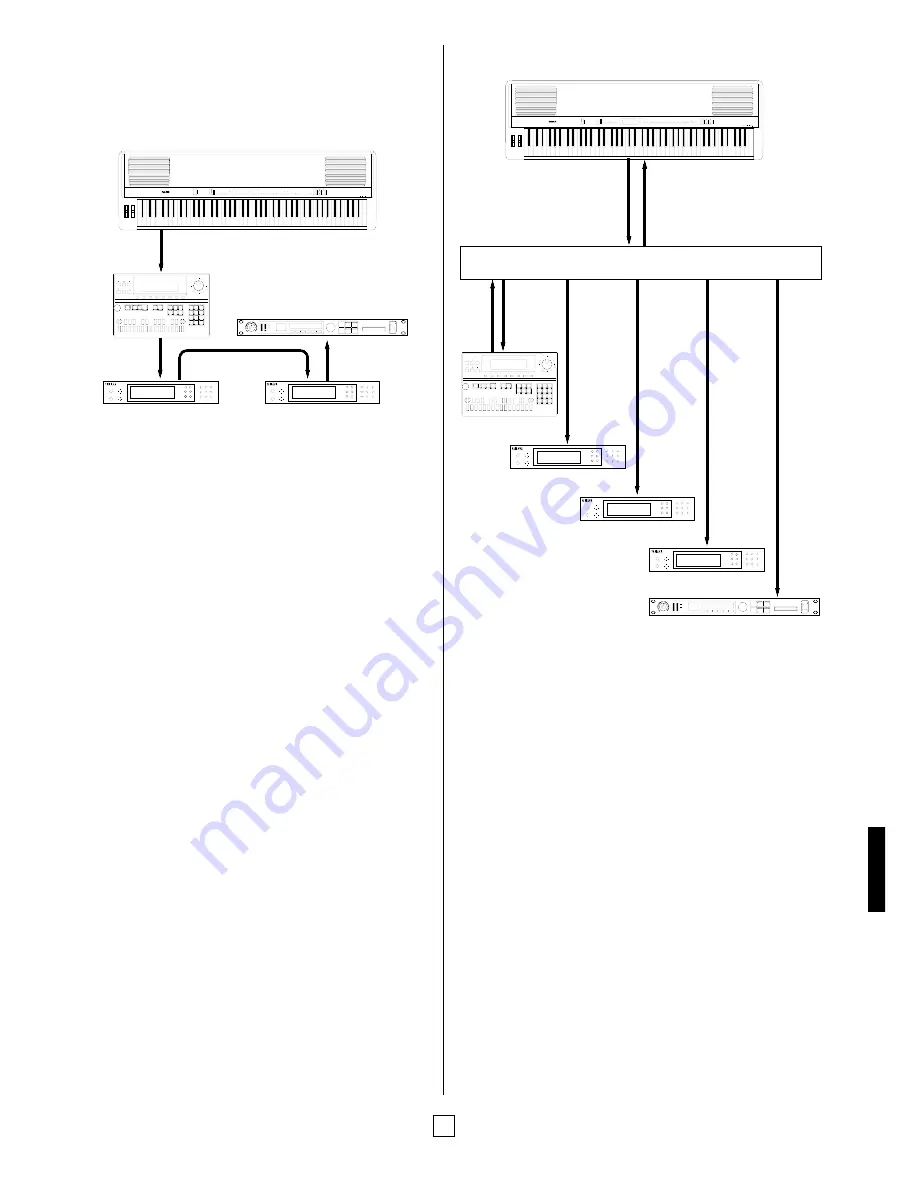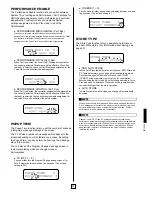
59
APPENDIX
Besides eliminating the possibility of MIDI delays, a MIDI
patch bay is essential in a larger setup where you frequently
need to perform bulk dump and other operations with
specific devices, and don’t want to waste time plugging and
unplugging cables accordingly. A MIDI patch bay lets you
instantly reconfigure the way all MIDI cables are connected
for a given application.
MIDI
THRU 2
MIDI
IN 2
MIDI
OUT
MIDI
OUT
MIDI
IN
MIDI
THRU 3
MIDI
IN
MIDI
THRU 4
MIDI
IN
MIDI
THRU 5
MIDI
IN
MIDI
THRU 6
MIDI
IN
MIDI
IN
MIDI
IN 1
MIDI
THRU 1
P150
SPX-990
MU80(A)
MU80(C)
MU80(B)
QY300
MJC 8 MIDI Patch Bay
A more sophisticated MIDI setup is required if you want to
connect a sequencer, several tone generators and perhaps
an effects device. The series, or “daisy chaining” method is
shown in the following illustration.
In this case, the sequencer is used to record the note,
program change, controller, etc. data as you play the P-150,
and then play it back using the voices in the external tone
generators, as well as the P-150’s internal voices.
Multitimbral tone generators (such as the Yamaha MU80)
can play more than one voice at a time, so you can configure
them for layering several voices by assigning the same MIDI
channel to more than one voice, or build up a complex
ensemble by assigning a different MIDI channel to each
voice that makes up a part in your composition.
You can send program change messages directly to the
external tone generators and the effects device (such as the
SPX-990) from the P-150, or record these messages in the
sequencer at specific locations in the song, so that voices
and effects will change “on cue” during sequencer
playback—thus giving you enormous music production
power. Note that since you would be recording each music
part using a different voice, you would need to set the P-
150’s keyboard Local feature to Off status (see page 48).
Be aware that the longer your daisy chain becomes (and
also depending on how long your MIDI cables are), the
higher the chances that a noticeable “MIDI delay” will occur
during play, caused by the time it takes for the MIDI data to
reach each device. To avoid such a potentially annoying
problem, you can use a MIDI patch bay (such as the
Yamaha MJC 8), which is equipped with multiple MIDI IN
and MIDI THRU terminals, as shown in the following
illustration.
MIDI IN
MIDI
IN
MIDI
IN
MIDI IN
MIDI OUT
MIDI
THRU
MIDI THRU
P150
QY300
MU80(A)
MU80(B)
SPX-990
















































